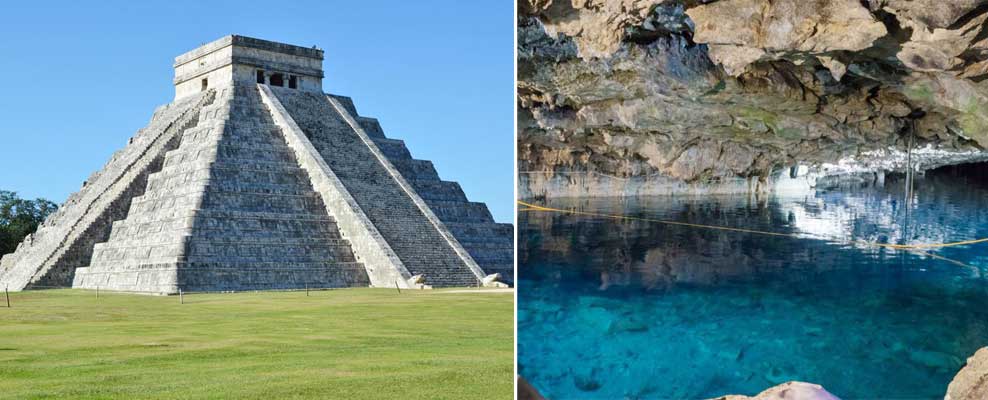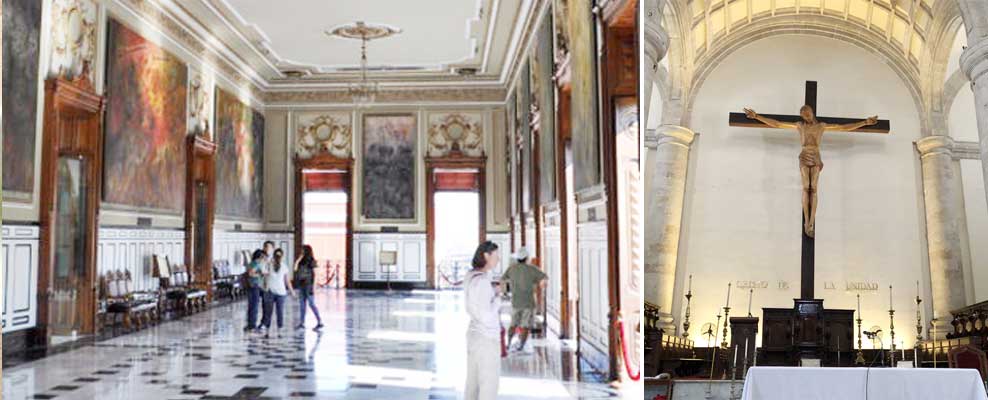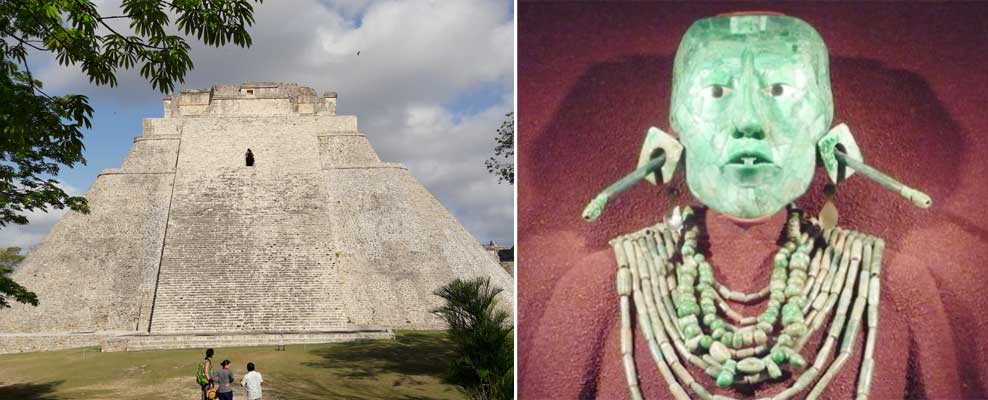Merida is the capital of the State of Yucatán, in the Southern Peninsular of Mexico. In 1908 it was of the richest regions in the world as it cultivated and exported Henequen, the Green Gold, made from the agave plant known the world over as sisal that was used for rope and sturdy packaging. The plant grown on Haciendas since the mid-eighteenth century made the 50 or so families who owned more than 1000 plantations spectacularly rich, it further impoverished the Maya who worked the fields and were often in debt bondage to the owners. In the 60s when the industry collapsed due to the manufacture and use of nylon and plastics for rope and packaging, the Haciendas and workers were abandoned.

Merida has the oldest Cathedral in the Americas, and has many ancient Mayan ruins including Chichenitza and Uxmal. A network of underground sinkholes, called Cenotes, formed by a meterorite crash millions of years ago is another remarkable feature of the topography.

The oldest cathedral in the Americas is in Santo Domingo in the Dominican Republic, while the oldest on the land mass is in Merida. It dominates the central plaza that is framed by other beautiful colonial building that tell the story of the Yucatán – its wars, the waxing and waning of fortunes and the exploitation of the Maya – through brilliant paintings in the Governor’s Palace among the most poignant being the gigantic painting of the gnarled hands and another of the feet of the Mayan sisal workers who fueled the wealth of Yucatán. The Cathedral Ildefonso of Toledo was built by the Fransiscans in 1561 and completed in 1591.
The Cathedral has a 1200 pipe organ that came from Germany was installed in 1907. It also boasts the largest wood crucifix, the Cristo Del Unidad, made from light colored Birch wood. Canada gifted the 8 meter figure of Christ in 1967. The sturdy bases of the massive stone pillars of the Cathedral are taken from Mayan temples, as the Yucatán is Mayan land. When the Spanish came to the Yucatán, despite fierce resistance, they converted and enslaved the Mayas.

Just 65 Km from Merida is Uxmal, one of the better preserved Mayan cities that was discovered deep in the jungle by Stephens and Catherwood in their quest to find the lost cities of the Maya (1840). Uxmal means the Thrice Built City. Starting in 500 BC the Maya continued to build and live there till the 12th century, when the City receded deep into the Jungle. While Uxmal is not as extensive as Chichenitza, Teotuachan or Palenque, it is more ornate and delicate in style, and is well preserved.
The mask of Chaac, the God of Rain, with its nose raised to ask for rain, and extended downward in gratitude, is the most dominant and powerful decorative motif of the impressive pyramids and palaces at Uxmal. Chaac’s rectangular face, two large eyes, nose with nostrils flaring and open mouth with protruding teeth and ear-rings on the ears, would have been painted and studded with stones. In the 125 Pyramid of the Magician the grave of a high ranking Maya official, a ceramic mask and a jade necklace was found during restoration work in 2002. What is called the Nun’s quarters, the Governor’s palace and the playing field for the Cosmic Game are the grand structures revealing the grace of the Puuc style of Mayan architecture that reached its peak between the seventh and ninth centuries.

Besides the rich colonial and Mayan heritage the Yucatán, there is a high density ring of cenotes marking the rim of a colossal meteorite crater. As the Yucatán has no river or lakes they provided year round access to fresh water and were the foundation for the sophisticated Mayan cities, like Uxmal, to be sustained.
These gem like turquoise blue and green fresh water pools are considered by the Maya as the Gateway to the Underworld, and the dwelling of Chaac. These sparkling jewels, set in limestone rock, can be accessed through steep man-made steps that lead you down into the belly of the earth. Then one can plunge into the cool sparkling waters and look up at the limestone roof encrusted with trees, stalactites, bird’s nests and wasp hives while flocks of swallows fly overhead. Scuba divers also enjoy the clear deep waters.
Merida’s colonial ambience, slow place and graceful many hued buildings give it a unique charm. Theatrical performances and musical concerts in the many parks of the City where locals gather and dance make Merida a wonderful place to enjoy for a few days. Not surprisingly, the city is experiencing a construction boom, as Canadians and Americans are building homes having discovered the charms of Merida.
Photo credits: Banner Left: bugboy.com; Banner Center: mycorrihizas.org; Banner Right: bugboy.com
